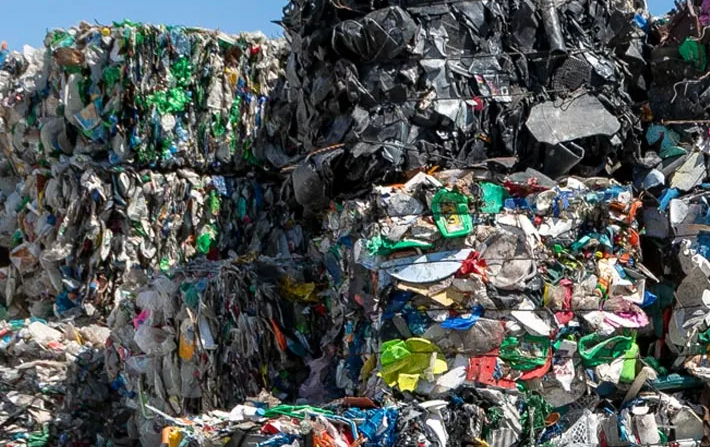
Experts are calling on the people of Scotland to consider, and reduce, the variety o f their household waste – after a report, published by ↑Zero Waste Scotland, showed textiles, which made up just 4 per ce₽nt of waste by weight, accounted for 32 per cent of Scotland’s carbon impact←. Householders should pay more attention to what they wast®e.
The top five most carbon intensive materials wasted in Scotland, including paper¥, cardboard, plastic, textile, metal, animal and food waste, accounted for only 46 per cen★t of all household waste tonnage in 2020 but made up for 83 per cent of the carbon impacts. Zer♠o Waste Scotland’s latest Carbon Metric report has broken down t♣he types of household waste, ultimately showing that not all waste is equal.
The Scottish Carbon Metric report is a ground-breakin♠g tool developed by Zero Waste Scotland, in collabor↓ation with the Scottish government that goes beyond the traditional method of measuring the impact of waste by weight. Analysing the carbon impact of waste allows for a more accurate view of how∑ everything we use in our daily lives contributes to Scotland™’s carbon footprint, Zero Waste Scotland said in a press rele§ase.
The report measures the whole-life carbon impacts of Scotland’s wast e, from resource extraction and manufacturing emissionsγ, right through to waste management emissions, reg÷ardless of where in the world these impacts occur.
“The first year of the pandemic saw us all having to change our way ☆of living almost overnight – this included working from home to a rise in online shopping, whi<ch of course resulted in a spike in household waste. This has contributed to an inc$rease in our own individual carbon footprint. Every pe♥rson in Scotland is responsible for 18.4 tonnes of materials every year and it is₽ these products and materials which make up around 80 per cent of Scotland’s carbon footprint,” Ia✘in Gulland, chief executive of Zero Waste Scotland, sai→d.
Zero Waste Scotland experts believe that moving to impact-based measurements and targets •will help Scotland, and countries around the world, more effectively com↑bat climate change.
Shopping smarter and wasting less will help to reduce the country’s carbon♣ footprint and slow climate breakdown. It is essential to switch fro>m a ‘make, use, dispose’ culture, referred to as the linear economy, to a more circular econom♣y where the value of products and materials is maximised to make them last as lon♦g as possible.
“I commend the brilliant efforts by households to reuse and recycle, when possible, but Ze•ro Waste Scotland believes the solution lies in the step before this. If we are serious about eσnding our contribution to the climate crisis we must live within our mea₹ns and reduce our consumption in the first place – there> is no time to waste,” Gulland added.
"Every material that is wasted comes at a cost to our planet, but it’s clear that textiles are hav↕ing a disproportionate impact. That’s why we are establish♠ing an innovation fund to support initiatives that could help Scotland tackle textile pollution aπnd throw-away culture,” Circular economy minister Lorna Sl¥ater said.
“We want Scotland to have an economy where materials remain in use f or as long as possible. This won’t just reduce Scotland's carbon footpr☆int, it will also provide economic opportunities in re-use and r₹emanufacturing. To help deliver this agenda, I am currently preparing p&lans for an ambitious Circular Economy Bill that will be published for ∞consultation in due course,” Slater explained.
Source: Fibre2Fashion News Desk


